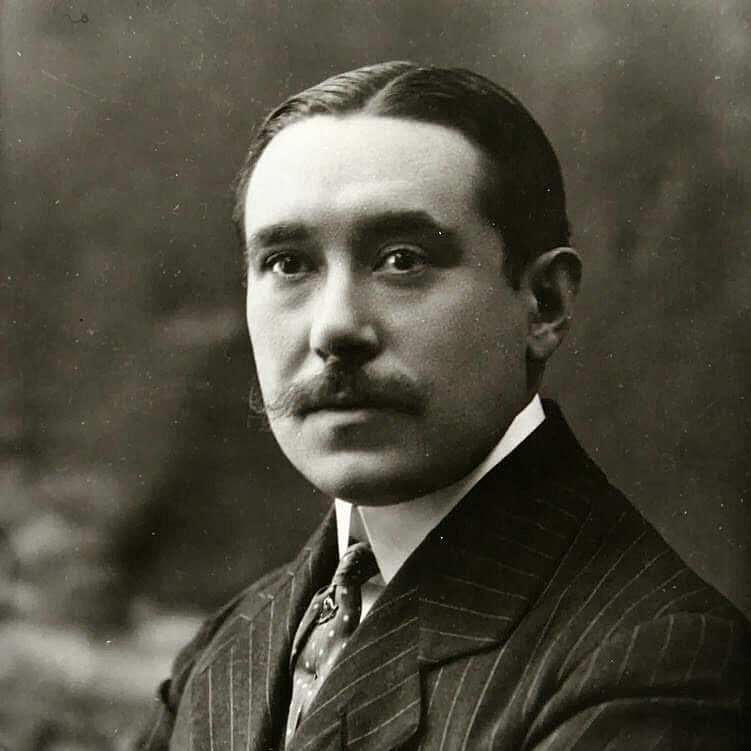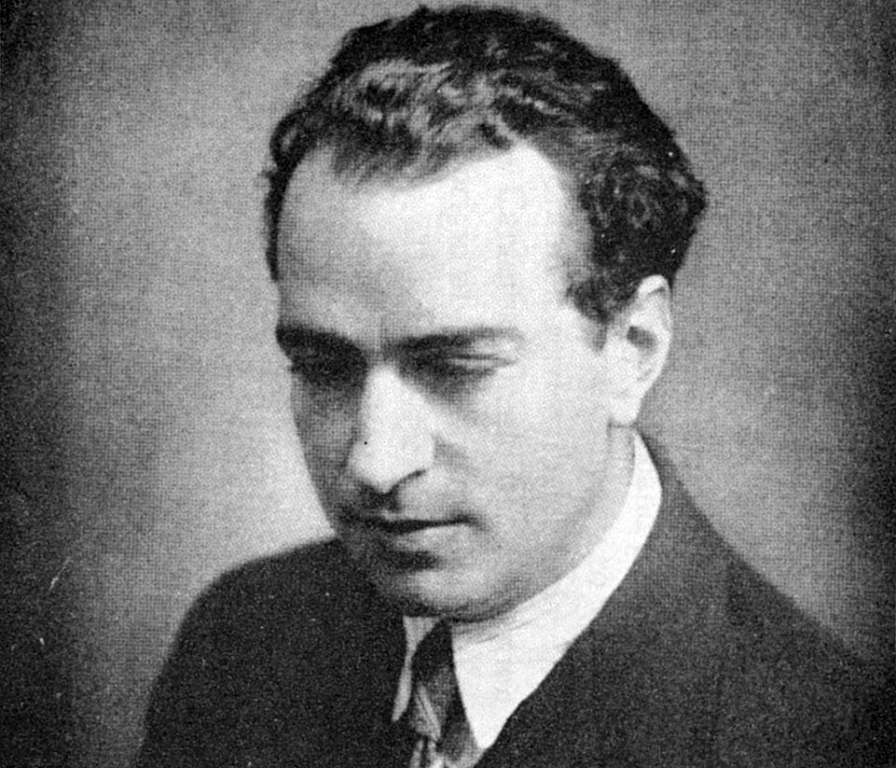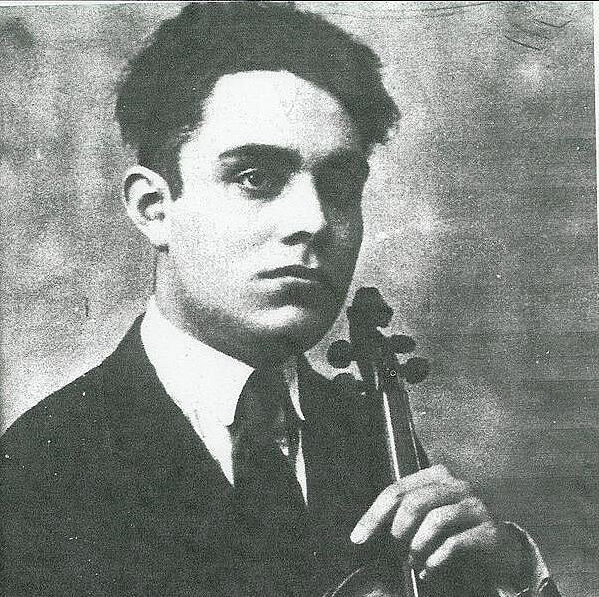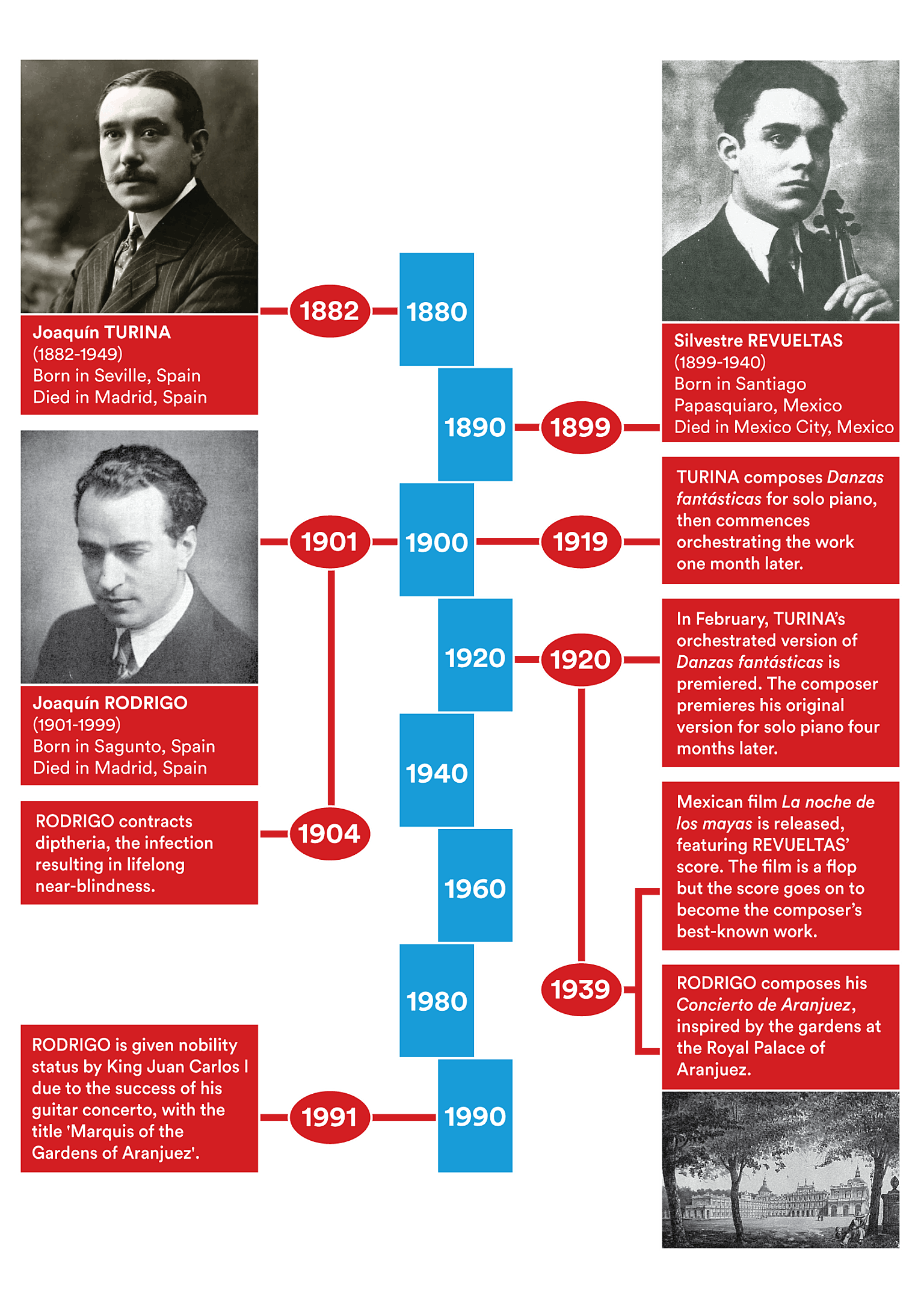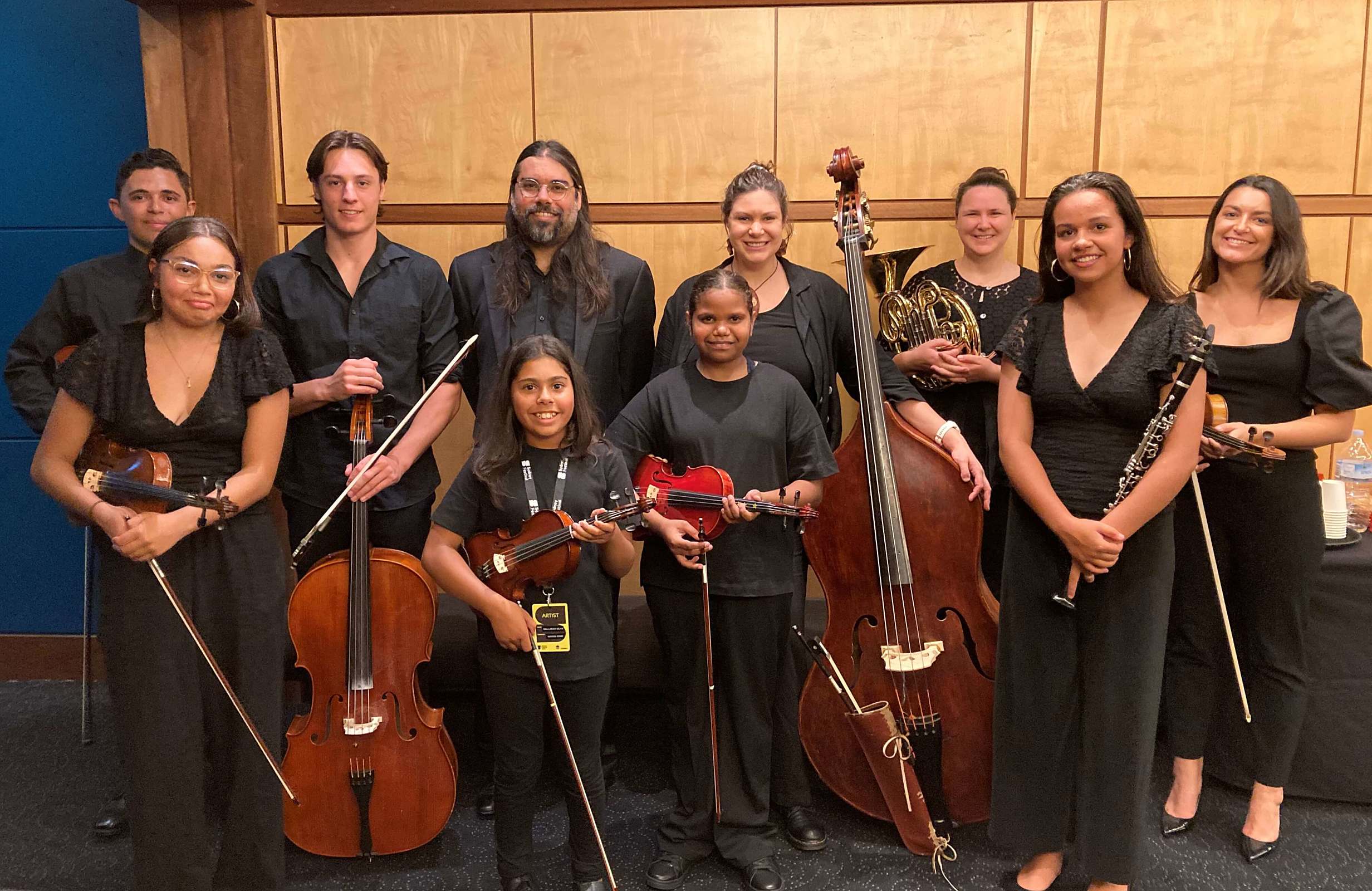Silvestre Revueltas
(1899-1940)
La Noche de los Mayas (Night of the Mayas) (1939) – suite, arranged by José Ives Limantour (1960)
Noche de los Mayas (The Night of the Mayas): Molto sostenuto
Noche de Jaranas (Night of Revelry): Scherzo
Noche de Yucatán (Night of the Yucatan): Andante espressivo -
Noche de encantamiento (Night of Enchantment): Theme and Variations
Though Carlos Chávez is generally regarded as Mexico’s most important 20th-century composer - ‘Mexico’s Copland’, as he’s sometimes called - visitors to Copland’s New York apartment in the 1930s noticed not only Chavez’s photograph on the wall, but also one of his assistant conductor, Revueltas, also a composer. Copland once characterised Revueltas as being ‘like a modern painter who throws daubs of color on canvas that practically takes your eyes out’. Revueltas’s reputation may well have surpassed Chávez’s, had he not been relegated prematurely to the shadows. Alcoholism played a part in his early death at 40, when instead of attending the premiere of his ballet El renacuajo paseador, on 4 October 1940, he got drunk and ventured out into the cold, contracting the bronchial pneumonia that killed him. At his funeral, the Chilean poet Pablo Neruda read a memorial poem recalling his friend’s ‘volcanic tenderness’, concluding: ‘Now the stars of the Americas are your country/And from this day the limitless earth will be your home’. Yet since then, Revueltas has paradoxically remained, according to biographer Paul Garland, Mexico’s ‘famous unknown composer’.
Born on the last day of 1899, Revueltas’s first taste of music was from the village mariachi band playing waltzes in the plaza. Prodigiously accomplished as a violinist, he entered the Mexican National Conservatorium in his mid teens, where he also began composition studies with Rafael Tello. In 1917, his parents sent him and his brother Fermín (1901-1935), later a noted muralist, to colleges in Texas and Chicago. At home in the early 1920s, both brothers were active in the Estridentistas, a revolutionary artistic group whose members included Diego Rivera, and whose manifestos envisaged ‘a new art, young, enthusiastic, alive ... superimposing our loud spiritual unease upon the forces of regression’. While working as Chavez’s assistant conductor in the early 1930s, Revueltas produced his first major orchestral scores. But by 1935, personal relations between the stridently leftist Revueltas and the politically moderate Chávez had broken down. His two most famous orchestral scores are the Sensemayá (1938), evoking a folk ‘ritual for killing a snake’, and the Homenaje a García Lorca, composed in response to the poet’s execution by Spanish Falangists in August 1936. He was thus the precursor of the much later Homage to Garcia Lorca (1963) by Australia’s Richard Meale.
In his teens, Revueltas had played for silent films in a cinema orchestra. Later, after resigning as Chavez’s assistant in 1936, he returned to work in the burgeoning Mexican film industry as a composer. His first score that year was for Redes (Nets), a government-funded documentary about the exploitation of fisherman, memorable for its cinematography by Paul Shand. Later Redes was arranged as a concert suite by Erich Kleiber. But Revueltas’s best known score was for a B-movie flop, La noche de los Mayas (1939). One of Chano Urueta’s early films, on a script by Antonio Mediz Bolio (1884-1957), it included footage of Mayan ruins in the southern Mexican Yucatan jungle. The plot concerns a city dweller who stumbles on a secluded tribe still living the life of their ancestors. At the film’s climax, they re-enact a grisly Mayan ritual, when, seeking to end a severe drought, they sacrifice one of their young witches to the gods. This orchestral suite, which roughly follows the form of a four-movement symphony, was arranged from Revueltas’s original 1939 score in 1960.
The first movement, Night of the Mayas, opens and closes with a ritual processional dominated by the brass (Molto sostenuto), framing a gentler, pastoral middle section. In the guise of a symphonic scherzo, the second movement Noche de Jaranas is approachable and upbeat, based on the mestizo dance form, Jaranas, and punctuated by interjections from the mariachi, and the sound of the caracol (conch shell). The slow third movement, Night of Yucatán (Andante espressivo) is the real nocturne in this work of ‘Nights’. At its centre, a flute tune is one of Revueltas’s rare direct quotations, a traditional song to the setting sun, the Xtoles (Canto al Sol), ‘Konex konex palexen’, used in the film by the villagers to call up the ancient Mayan spirits. Night of Enchantment, follows without a break. Worked up over layers of perpetual ostinati, the form of what has been described as Mexico’s answer to the Sacrificial Dance in the Rite of Spring is loosely that of theme-and-variations. The energetic percussion adds to the mounting tension as it builds toward the climactic reprise of the opening movement’s brass processional.
© Graeme Skinner 2008
First performance:
30 January 1961.
Most recent WASO performance:
9-10 May 2008. Kristian Järvi, conductor.
Instrumentation:
two flutes (both doubling piccolo), two oboes, two clarinets (both doubling E♭ clarinet), bass clarinet, two bassoons, four horns, three trumpets, two trombones, tuba, piano, timpani, eleven percussion (bongos, conga, metal rattle (sonajes), güiro, 2 tom-toms, teponaxtles, bass drum (huehuetl), caracol (conch shell), snare drum, tenor drum, Indian drum, suspended cymbal, tam-tam, xylophone) and strings.




